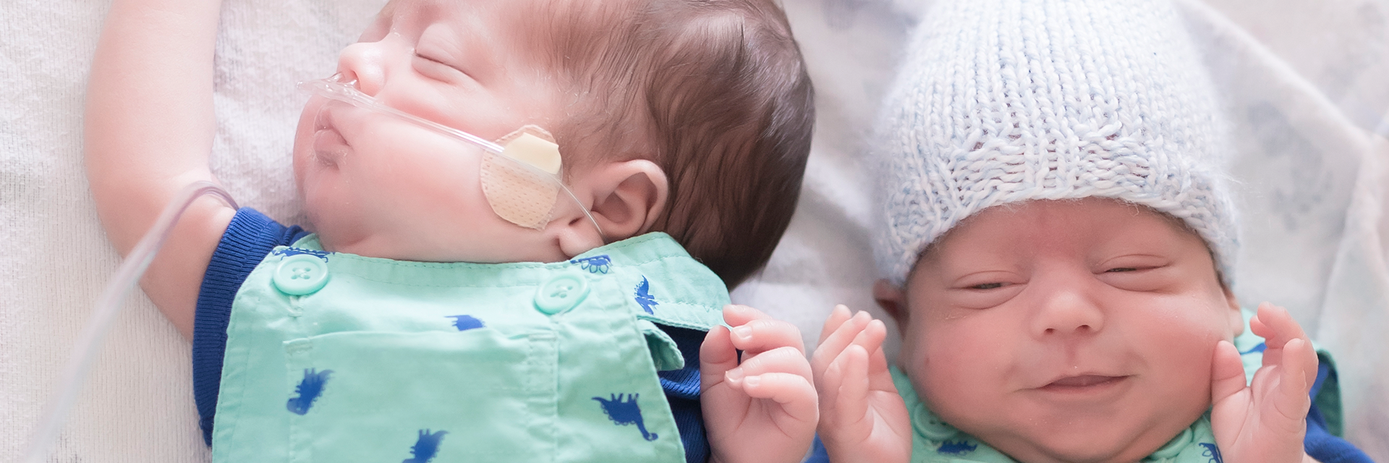Every year on November 17, we observe World Prematurity Day to raise awareness about the challenges and risks associated with premature births. Premature birth, defined as birth before 37 weeks of gestation, affects approximately 15 million babies worldwide1 each year and is the leading cause of neonatal deaths. One significant factor contributing to premature births is preeclampsia, a serious pregnancy complication 2, contributing to about 1/5 of all premature deliveries3
What is preeclampsia?
Preeclampsia is a condition characterized by high blood pressure and signs of damage to another organ system, often the kidneys, occurring after 20 weeks of pregnancy. It can lead to severe complications for both the mother and the baby if not managed properly. Symptoms may include severe headaches, changes in vision, upper abdominal pain, and swelling in the hands and face.2
The connection between preeclampsia and premature birth
Preeclampsia is one of the leading causes of premature birth. When a mother develops preeclampsia, the only definitive treatment is to deliver the baby, regardless of the gestational age. This often results in preterm delivery to prevent life-threatening complications for both the mother and the baby.2
Impact on premature babies
Premature babies face numerous health challenges, including respiratory distress syndrome, infections, and long-term developmental issues. The earlier a baby is born, the higher the risk of complications. Babies born to mothers with preeclampsia are particularly vulnerable due to the potential for restricted growth and other health issues related to the condition.2
Raising awareness and supporting research
World Prematurity Day is an opportunity to highlight the importance of prenatal care and early detection of high risk for and diagnosis of preeclampsia 2,4. Screening in early pregnancy with blood sample-based methods may help identify people in high risk of developing preeclampsia and preventing it altogether, if preventive treatment is started early enough 5,6. Later in pregnancy, regular prenatal visits can help detect early signs of preeclampsia, allowing for timely diagnosis and intervention. Additionally, supporting research into the causes and treatments of preeclampsia can lead to better outcomes for both mothers and babies7.
How you can help
- Educate yourself and others: Learn about the signs and symptoms of preeclampsia and the importance of early screening of preeclampsia as a part of prenatal care.
- Advocate for maternal and fetal health: Support policies and programs that provide comprehensive prenatal care for all women.
By understanding the link between preeclampsia and premature birth, we can work towards reducing the incidence of preterm births and improving outcomes for mothers and babies worldwide. This World Prematurity Day let’s come together to support families affected by premature birth and advocate for better maternal health care.
Listen to Suzie’s Story about her experience with preeclampsia.
References:
- Chawanpaiboon S, Vogel JP, Moller AB, Lumbiganon P, Petzold M, Hogan D, et al. Global, regional, and national estimates of levels of preterm birth in 2014: a systematic review and modelling analysis. Lancet Glob Health. 2019;7(1):e37–e46.
- Dimitriadis, E., Rolnik, D.L., Zhou, W. et al. Pre-eclampsia. Nat Rev Dis Primers 9, 8 (2023). https://doi.org/10.1038/s41572-023-00417-6
- Premature Birth Creates Emotional Challenges, Preeclampsia foundation
- Poon, L. C., Shennan, A., Hyett, J. A., Kapur, A., Hadar, E., Divakar, H., McAuliffe, F., da Silva Costa, F., von Dadelszen, P., McIntyre, H. D., Kihara, A. B., Di Renzo, G. C., Romero, R., D'Alton, M., Berghella, V., Nicolaides, K. H., & Hod, M. (2019). The International Federation of Gynecology and Obstetrics (FIGO) initiative on pre-eclampsia: A pragmatic guide for first-trimester screening and prevention. International journal of gynaecology and obstetrics: the official organ of the International Federation of Gynaecology and Obstetrics, 145 Suppl 1(Suppl 1), 1–33. https://doi.org/10.1002/ijgo.12802
- Rolnik, D. L., Wright, D., Poon, L. C., O'Gorman, N., Syngelaki, A., de Paco Matallana, C., Akolekar, R., Cicero, S., Janga, D., Singh, M., Molina, F. S., Persico, N., Jani, J. C., Plasencia, W., Papaioannou, G., Tenenbaum-Gavish, K., Meiri, H., Gizurarson, S., Maclagan, K., & Nicolaides, K. H. (2017). Aspirin versus Placebo in Pregnancies at High Risk for Preterm Preeclampsia. The New England journal of medicine, 377(7), 613–622. https://doi.org/10.1056/NEJMoa1704559
- Wright, D., Rolnik, D. L., Syngelaki, A., de Paco Matallana, C., Machuca, M., de Alvarado, M., Mastrodima, S., Tan, M. Y., Shearing, S., Persico, N., Jani, J. C., Plasencia, W., Papaioannou, G., Molina, F. S., Poon, L. C., & Nicolaides, K. H. (2018). Aspirin for Evidence-Based Preeclampsia Prevention trial: effect of aspirin on length of stay in the neonatal intensive care unit. American journal of obstetrics and gynecology, 218(6), 612.e1–612.e6. https://doi.org/10.1016/j.ajog.2018.02.014
Revvity Inc. does not endorse or make recommendations with respect to research, medication, or treatments. All information presented is for informational purposes only and is not intended as medical advice. For country specific recommendations, please consult your local health care professionals.
For research use only. Not for use in diagnostic procedures.

































